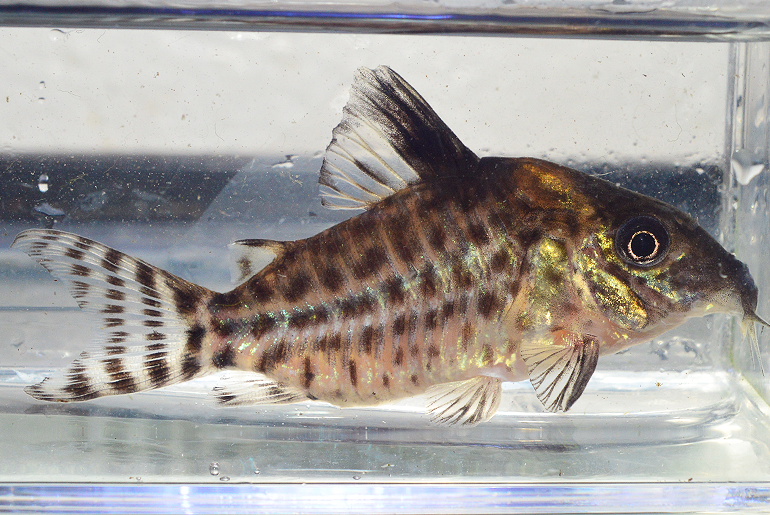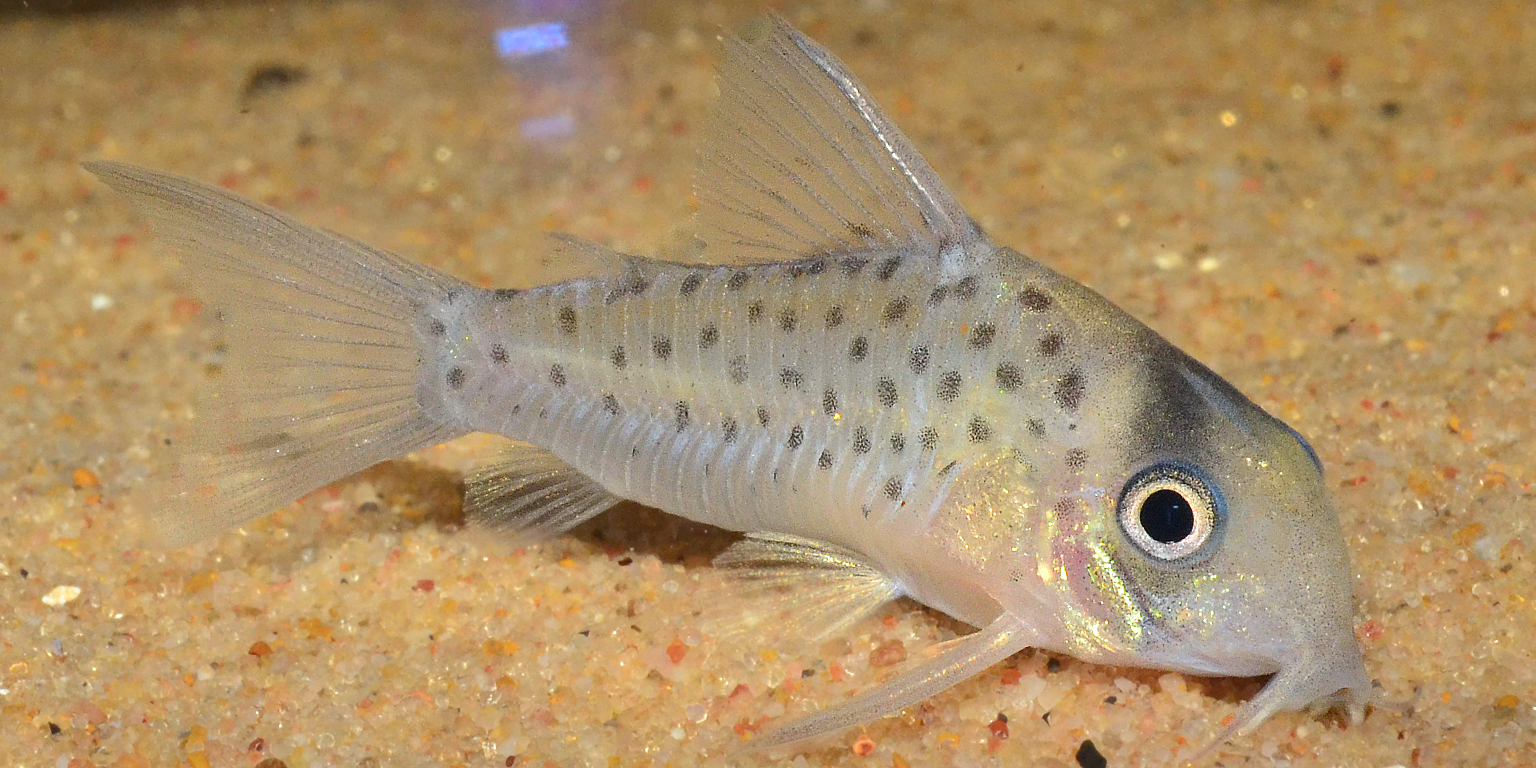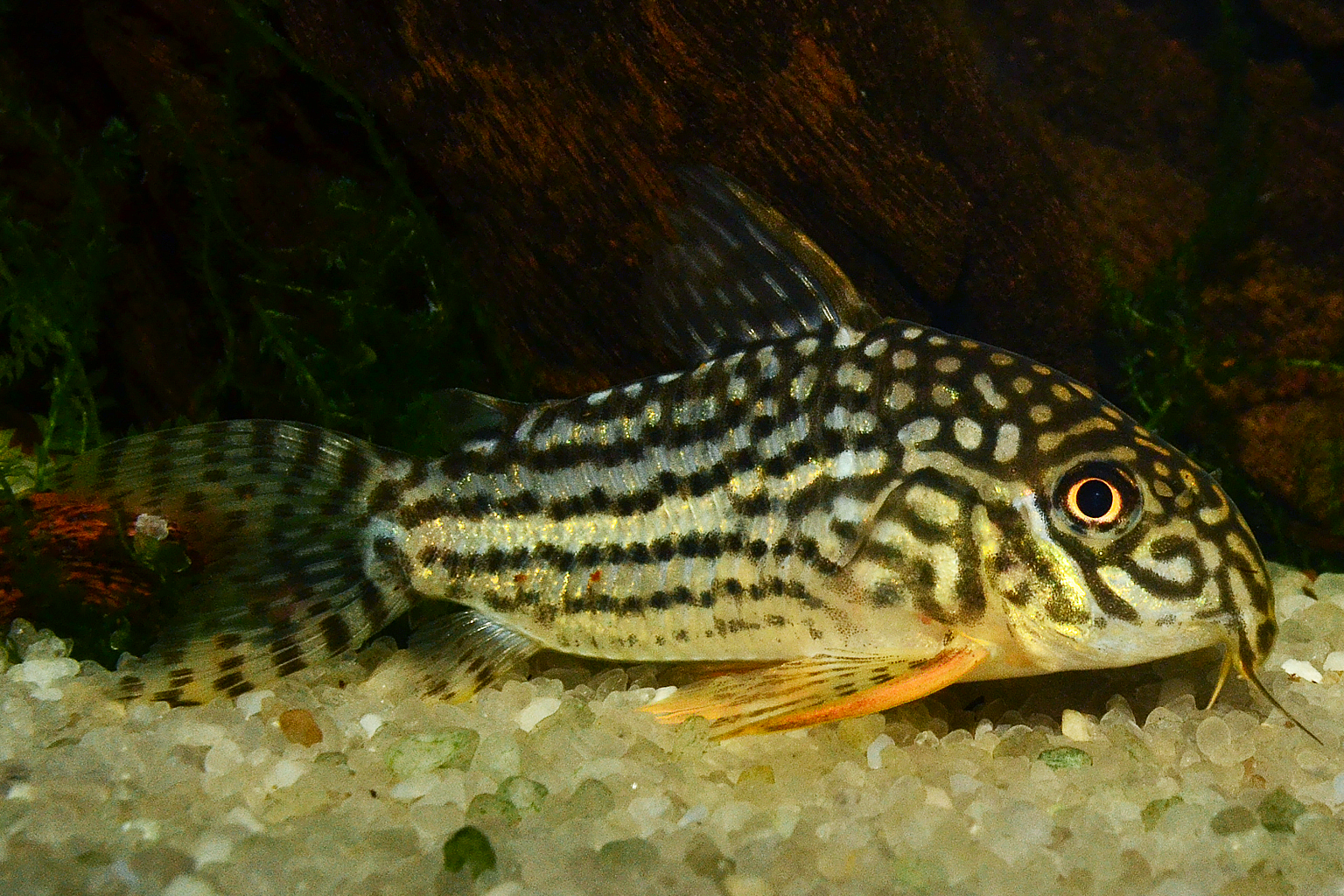Catfish from the Rio Xingu This fish is known throughout the aquarium trade as a “King Tiger Pleco” though using this name is deceiving because this title blankets 6 different hypothetical species. This specific variant is from the Rio Xingu in Brazil. It is a male and was purchased from the whole seller as “wild-caught”. The mature males will grow whiskers (odontodes) and their pelvic fins will become sharp with bristles. These fish do have…
Male in Specimen Viewer Panaqolus maccus is a loricariid from 1Venezuala. Most “plecos” that you see in the aquarium trade will get quite large, usually 5 to 12+ inches but this South-American catfish is very small. It is about the size of your thumb. This fish is rarely seen except when I add a lot of leaves to the aquarium, then it becomes bolder to come out when feeding. Male specimens grow odontode (hard whiskers)…
Corydoras agassizii is a beautiful Corydoras from the eastern boarder of Peru and the Western boarder of Brazil. These fish have never been bred in captivity before, meaning all specimens are wild caught and imported. Here in the United States, they seem to be most often imported with the generic locality, “Peru” though they are known to be in the 1Rio Ampiyacu. Those who enjoy Corydoras will realize that C. agassizii has quite a different…
Corydoras atropersonatus is a Lineage 9 corydoras which it shows with its very curved head. These are often imported from 1Peru, Loreto, Rio Nanay; 1Ecuador, Rio Tigre drainage, Rio Canambo Pastaza Providence but the specimen shown is owned by myself but purchased as captive bred through Jerry Josh in the St. Louis Missouri area, USA. Atro in latin means black and personatus means mask, in reference to its black band over the eyes. There are…
Corydoras sterbai has been in the aquarium trade for a long time and many of what you see on the market today are captive bred specimens. This fish originates in Brazil but also has a Bolivian variant (Corydoras cf. sterbai). I have a group of 7 sterbais and the most dominant eater is a female. She is the largest in the group and has beautifully long barbels.
Mikrogeophagus altispinosus – Small Earth Eater – High Spine Mikrogeophagus altispinosus is a small cichlid that can be found in multiple countries of South America. You may know this fish by another name that is often used in the aquarium trade, “Bolivian Ram”. This fish does come from Bolivia but it also can also be found in Venezuala and near Mato Grosso Brasil. Males can be distinguished from females by the first couple of spines…
Male and Female Pair About Amatitlania sajica was a once common fish in the aquairum trade under the common name, “T-Bar Cichlid”. It was within the last few years that its genus was changed from Cryptoheros to the current, Amatitlania which is a reference to a type of traditional paper that is made from various ficus plants(1). This species is sexually dimorphic. The males can determined by their red and blue dorsal fin and females…
Previously subject to open nomenclature and was given the hypothetical name Chaetostoma sp. “L187b”, it was later officially described as Chaetostoma formosae. This species comes from turbulent streams that has made it adapt its head shape to be more hydrodynamic. It is said to be an omnivore but it is debated by hobbyists whether it can eat an algae species known in the aquarium hobby as “Black Beard Algae”. This algae is very tough and…







